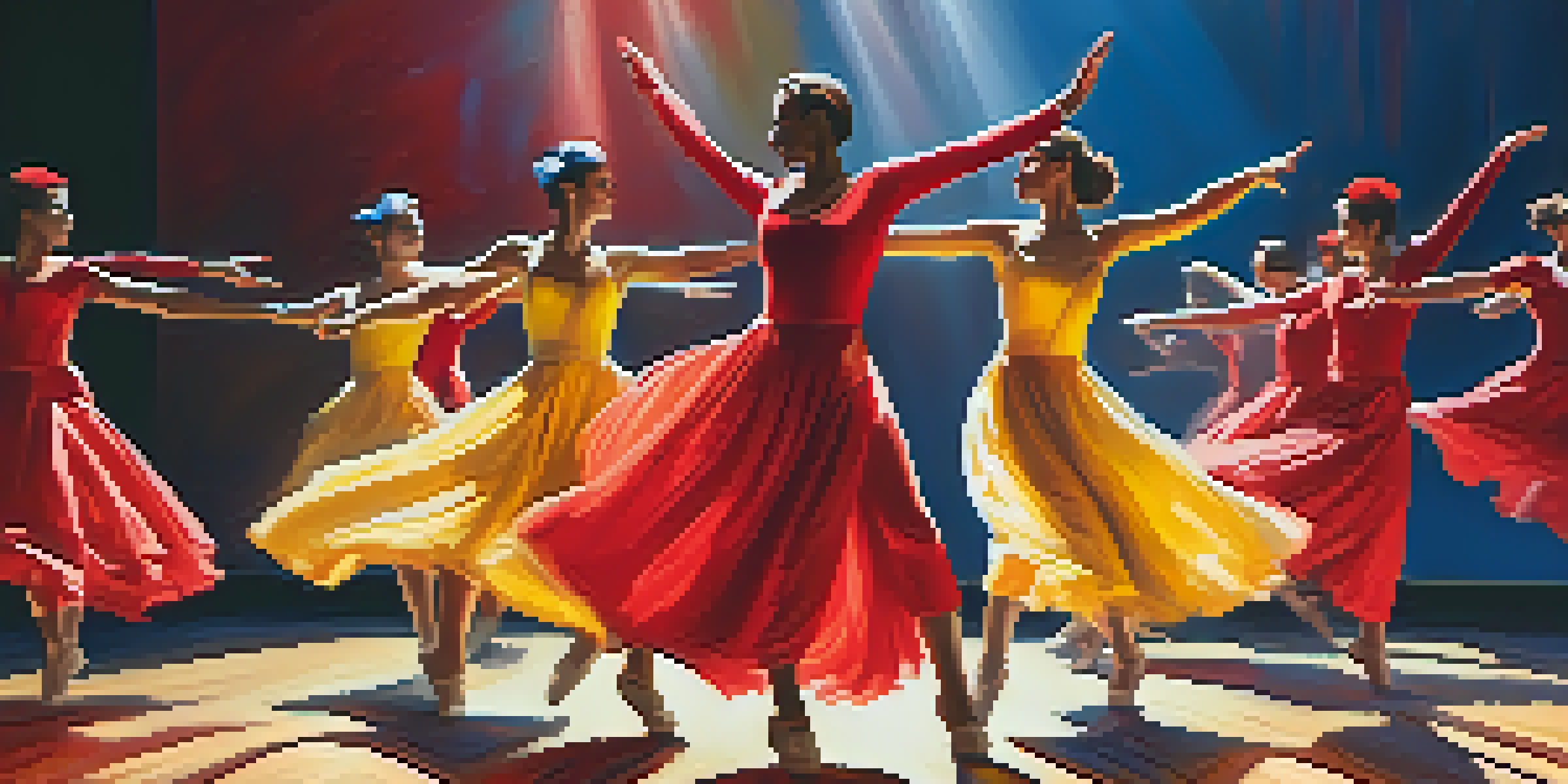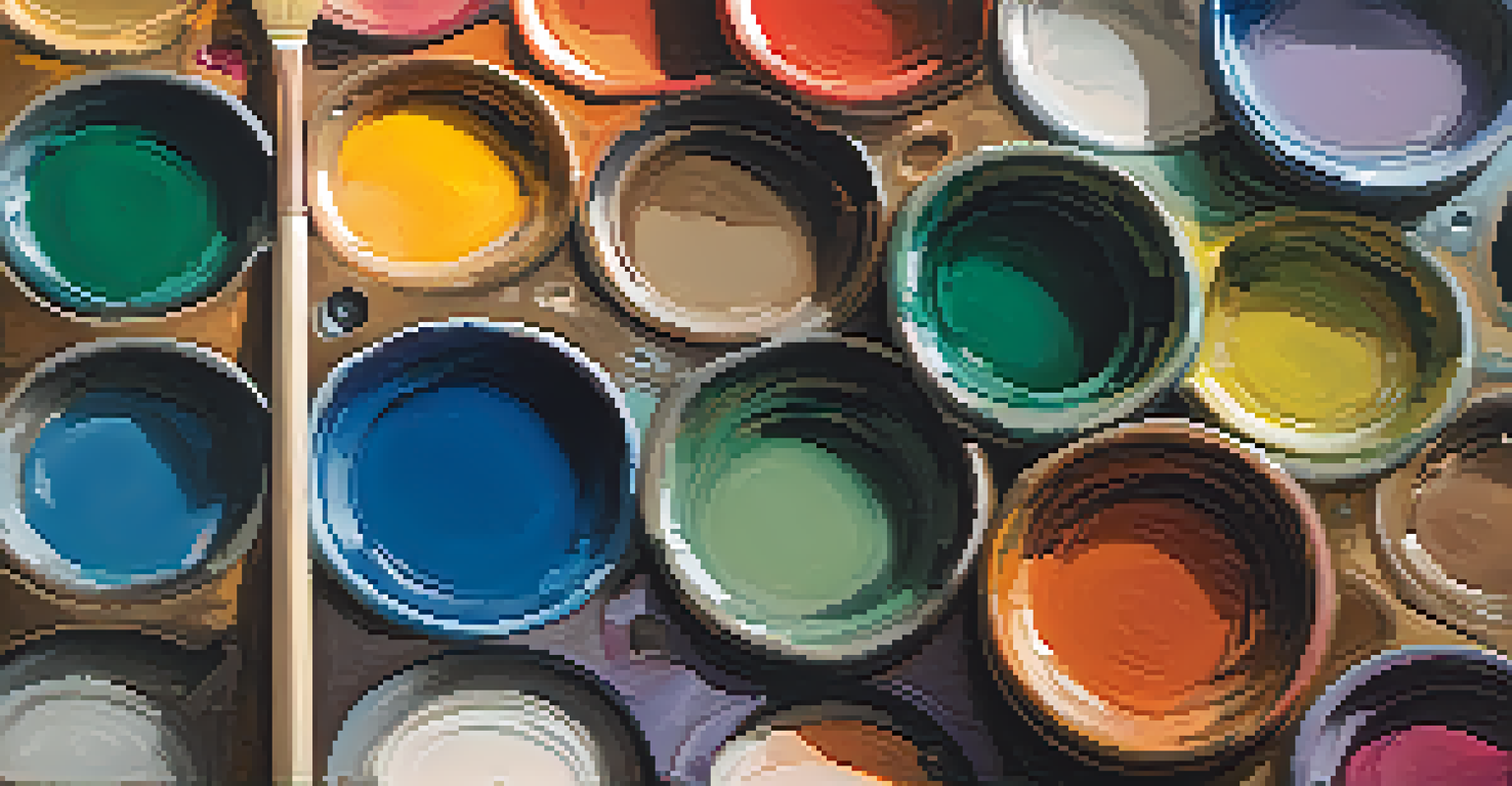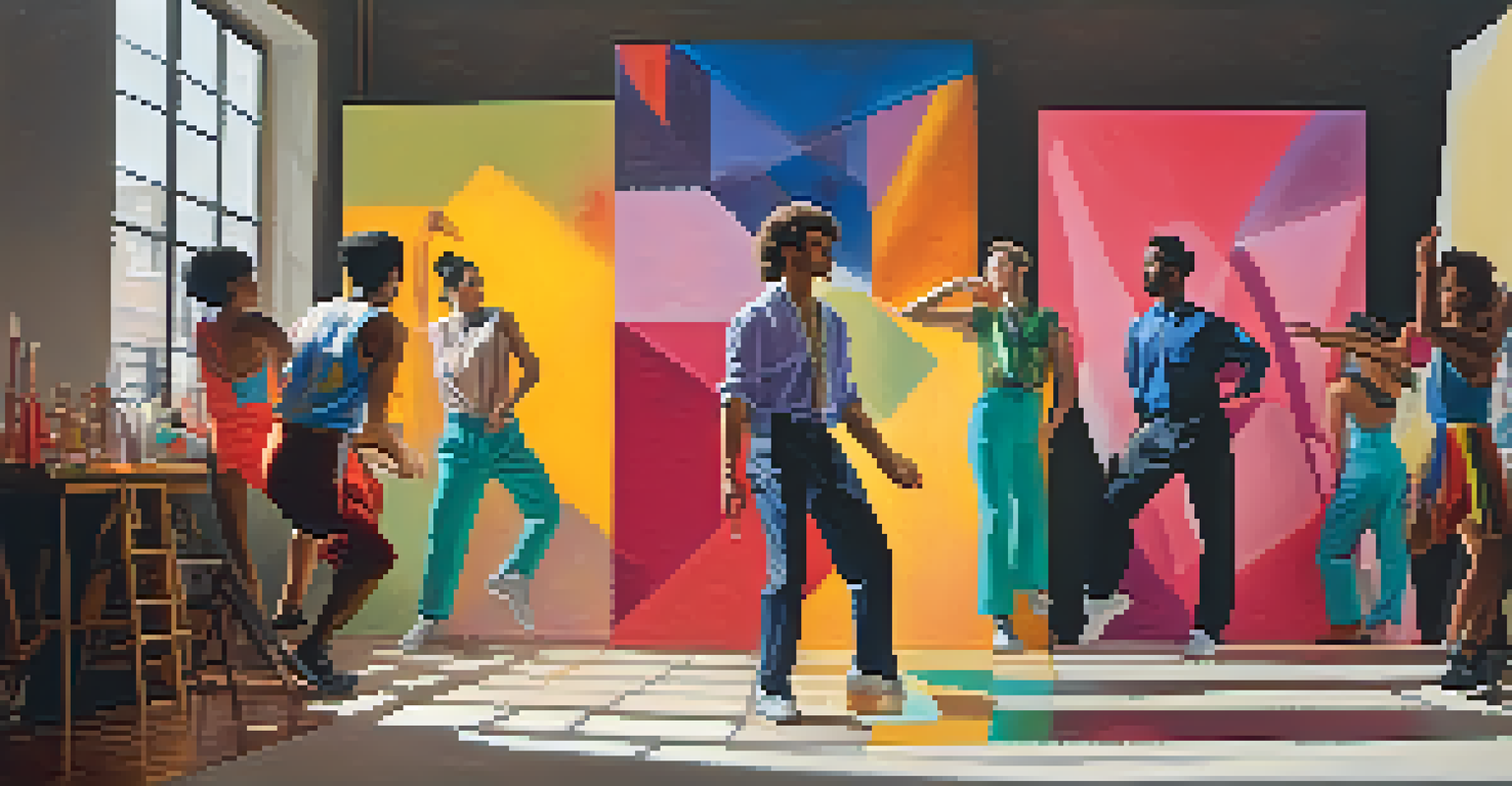The Interplay of Color in Dance and Painting: A Visual Journey

Understanding Color Theory in Visual Arts
Color theory is the backbone of both painting and dance. It explains how colors interact, influence emotions, and convey messages. Artists and dancers alike use colors strategically to evoke feelings and enhance storytelling.
Color is the keyboard, the eyes are the harmonies, the soul is the piano with many strings.
In painting, colors can create depth and contrast, guiding the viewer's eye across the canvas. Similarly, in dance, the colors of costumes and stage lighting can alter the mood of a performance. For instance, warm colors like red and orange can generate excitement, while cool shades like blue and green can evoke calmness.
By understanding color theory, both painters and dancers can create a more cohesive and impactful experience for their audiences. This interplay invites viewers to feel and interpret the art on a deeper level, making each performance or artwork memorable.
The Emotional Connection of Color in Dance
Color in dance is not just aesthetic; it carries emotional weight. For example, a dancer dressed in vibrant yellows may exude joy and energy, while deep blues can suggest melancholy. This emotional connection helps audiences relate to the performance more intimately.

Choreographers often choose colors that align with the themes of their dances. When a narrative calls for tension, darker colors might be utilized to amplify the mood. This choice directly impacts how the audience experiences the story being told through movement.
Color Enhances Emotional Impact
Colors in dance and painting evoke emotions and enhance storytelling, influencing how audiences connect with the art.
Ultimately, the emotional resonance of color in dance can transform a simple performance into a powerful experience. It’s this connection that often lingers in the minds of viewers long after the curtain falls.
Color as a Storytelling Tool in Painting
In the realm of painting, color serves as a vital storytelling tool. Artists use a palette of colors to convey narratives, emotions, and even historical contexts. For instance, think of how the bright colors in Van Gogh's 'Starry Night' create a sense of wonder.
Colors are the smiles of nature.
Much like dance, the color choices in painting can guide the viewer’s emotional journey. A somber piece may utilize muted tones, while a lively scene might burst with brightness. This creates a dialogue between the artwork and its audience, drawing them into the story.
Through this lens, color becomes a language of its own within visual art. By interpreting these colors, viewers unlock deeper meanings and connections to the artwork, enriching their experience.
The Role of Lighting in Dance and Painting
Lighting is a crucial factor that affects how color is perceived in both dance and painting. In dance, stage lighting can dramatically alter how colors appear, creating varying moods and atmospheres. For instance, a spotlight can enhance the vibrancy of a dancer's costume, making a powerful statement.
In painting, the way light interacts with colors can change the entire composition. The play of light and shadow can highlight certain aspects of a painting, drawing attention to specific details. Artists often manipulate light to create depth and intrigue, much like choreographers use lighting to enhance movement on stage.
Cultural Context Shapes Color Use
Cultural influences significantly affect color choices in both dance and painting, adding layers of meaning to artistic expression.
Together, lighting and color work harmoniously to create a visual spectacle in both mediums. This interplay not only captivates the audience but also amplifies the emotional impact of the art.
Cultural Influences on Color Choices
Culture plays a significant role in shaping color preferences in both dance and painting. Different cultures have unique associations with colors, which can influence how artists choose to express themselves. For example, in many Asian cultures, red symbolizes good fortune and happiness, often making appearances in dance costumes.
Similarly, in painting, cultural contexts can dictate the use of color. An artist may draw from their heritage to create a piece that speaks to their identity, using colors that resonate with their cultural background. This connection adds layers of meaning to the artwork.
By examining cultural influences on color choices, we gain insight into the diverse narratives present in both dance and painting. This rich tapestry of color helps celebrate the uniqueness of human expression across the globe.
The Intersection of Dance and Painting
Dance and painting may seem like distinct forms of art, but they often intersect in intriguing ways. Many choreographers draw inspiration from famous paintings, using their color schemes and themes to inform their choreography. This fusion creates a multi-sensory experience that can be unforgettable.
Conversely, painters may find inspiration in the fluidity and motion of dance. Capturing the movement of dancers can lead to dynamic compositions filled with energy and color. This reciprocal relationship enriches both art forms, pushing artists to explore new creative boundaries.
Technology Transforms Color Application
Advancements in technology are revolutionizing how color is utilized in dance and painting, leading to more immersive experiences.
This intersection highlights the beauty of collaboration in the arts. By blending the visual with the physical, both painting and dance can create a holistic experience that captivates audiences and encourages them to see art in a new light.
The Future of Color in Dance and Painting
As technology evolves, so does the use of color in both dance and painting. Digital art and virtual reality are opening new avenues for artists to explore color in innovative ways. Imagine a dance performance enhanced by augmented reality, where colors shift and change in real-time.
Moreover, advancements in lighting technology are allowing for more dramatic effects in dance performances. This can lead to a deeper emotional connection for the audience as colors change with the rhythm of the music. The possibilities for creative expression are expanding rapidly.

Looking ahead, the future of color in these art forms promises to be exciting and transformative. As artists continue to experiment with new mediums and technologies, we can expect to see even more captivating and immersive experiences emerge.